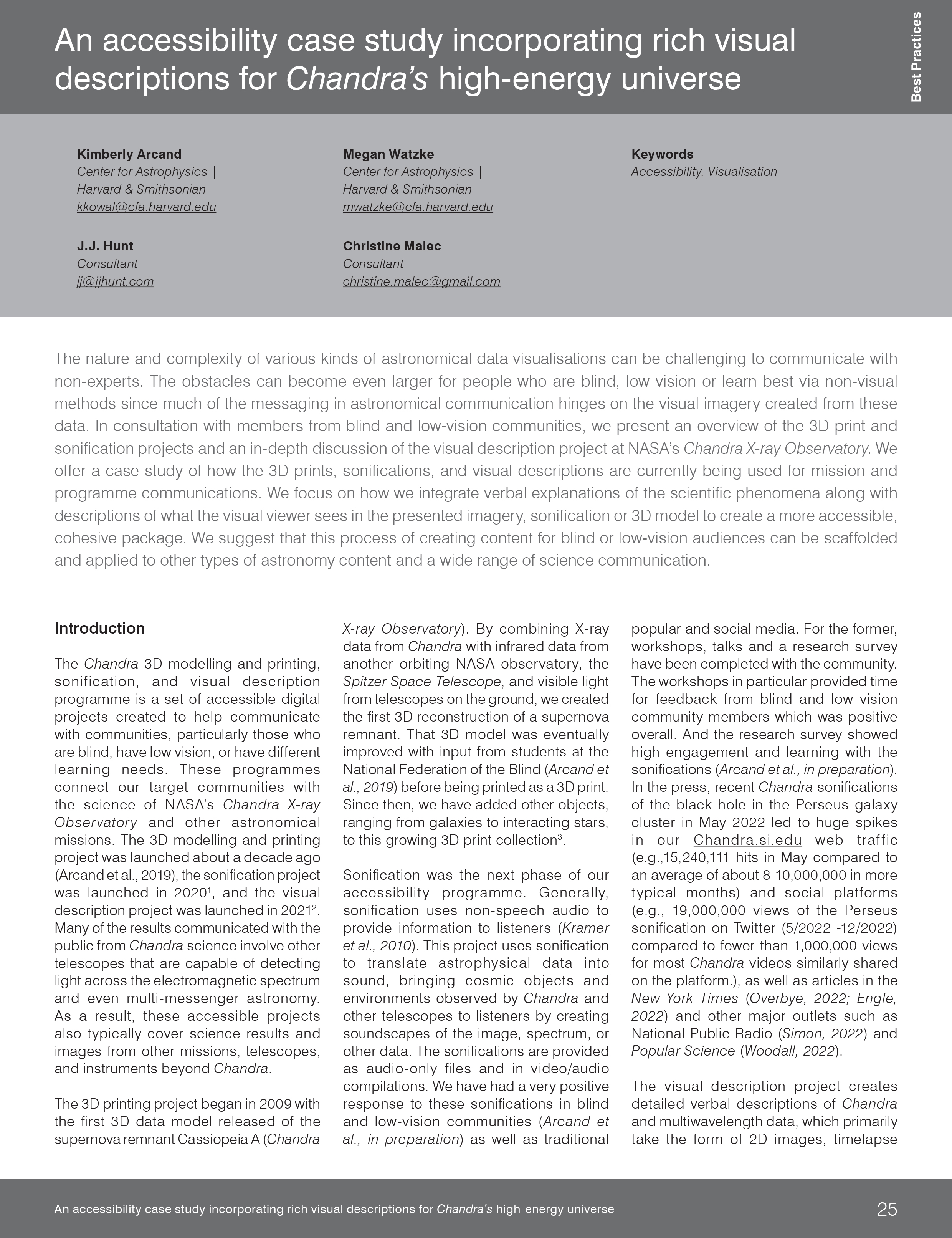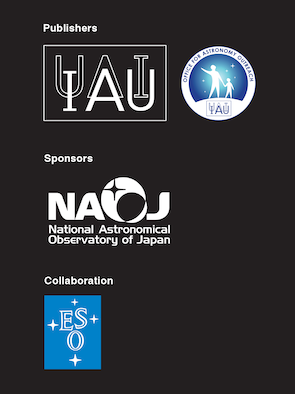|

Download this article
- PDF (1,4 MB)
Back to the Table of Contents
|
An accessibility case study incorporating rich visual descriptions for Chandra’s high-energy universe (page 25)
Arcand, K.; Watzke, M.; Hunt, J. J.; Malec, C.
Summary
The nature and complexity of various kinds of astronomical data visualisations can be challenging to communicate with non-experts. The obstacles can become even larger for people who are blind, low vision or learn best via non-visual methods since much of the messaging in astronomical communication hinges on the visual imagery created from these data. In consultation with members from blind and low-vision communities, we present an overview of the 3D print and sonification projects and an in-depth discussion of the visual description project at NASA’s Chandra X-ray Observatory. We offer a case study of how the 3D prints, sonifications, and visual descriptions are currently being used for mission and programme communications. We focus on how we integrate verbal explanations of the scientific phenomena along with descriptions of what the visual viewer sees in the presented imagery, sonification or 3D model to create a more accessible, cohesive package. We suggest that this process of creating content for blind or low-vision audiences can be scaffolded and applied to other types of astronomy content and a wide range of science communication.
Suggested Citation (APA)
Arcand, K., Watzke, M., Hunt, J. J. and Malec, C. (2023). An accessibility case study incorporating rich visual descriptions for Chandra’s high-energy universe. Communicating Astronomy with the Public Journal, 32, 25-30. https://www.capjournal.org/issues/32/32_25.pdf
|

